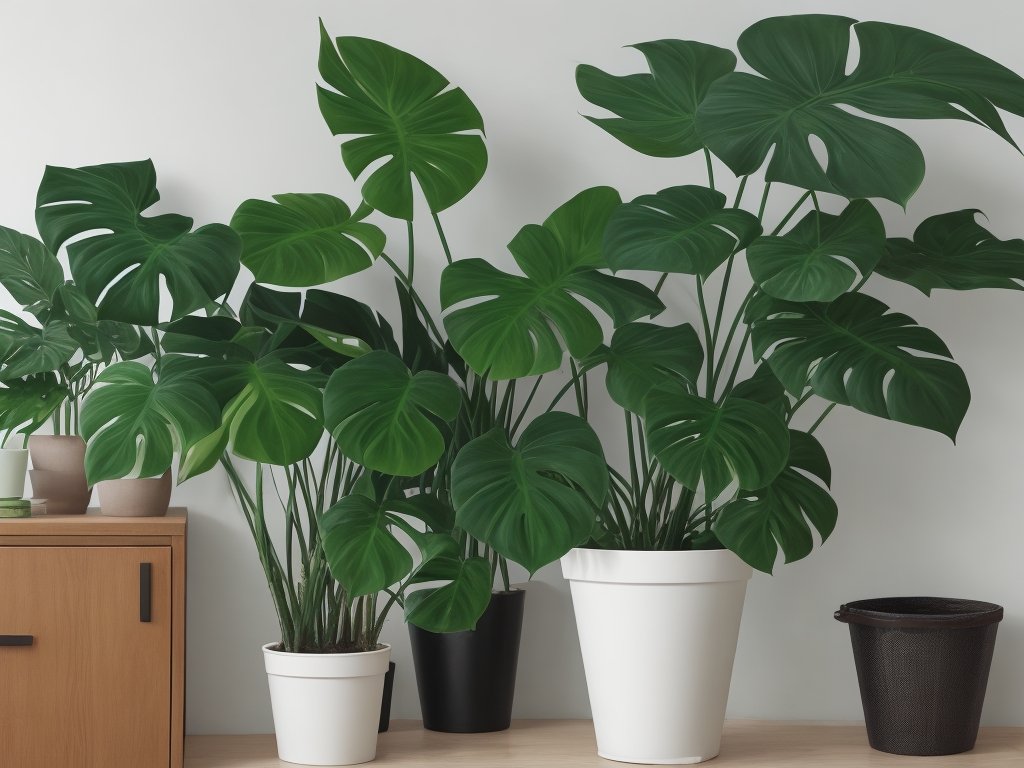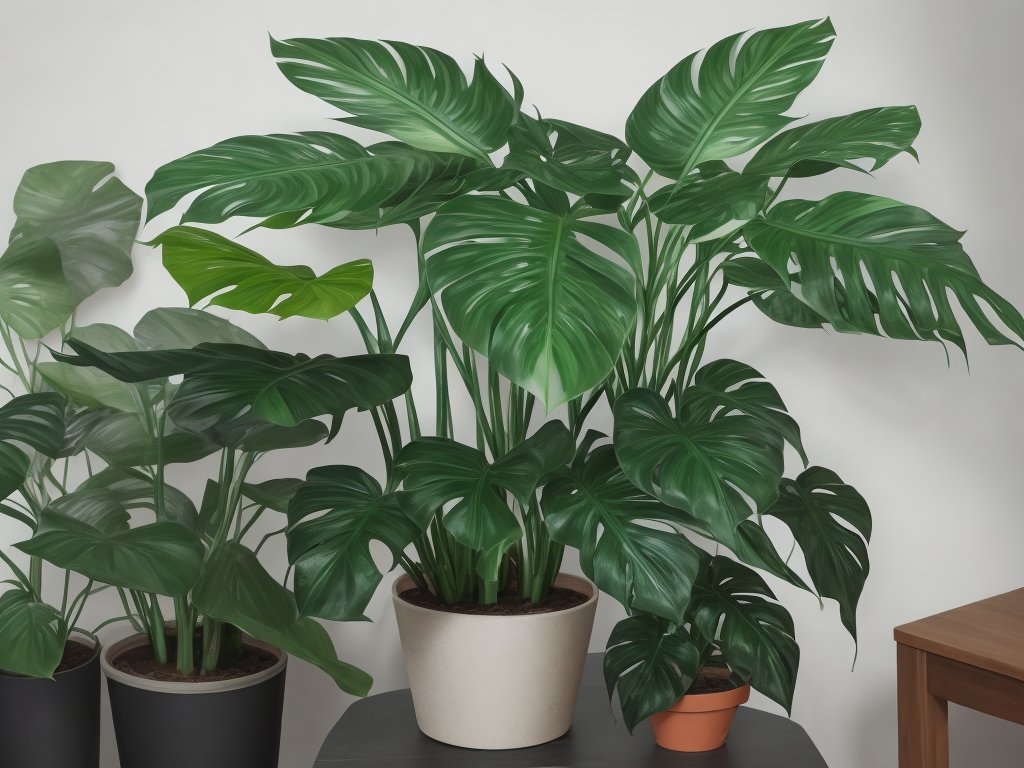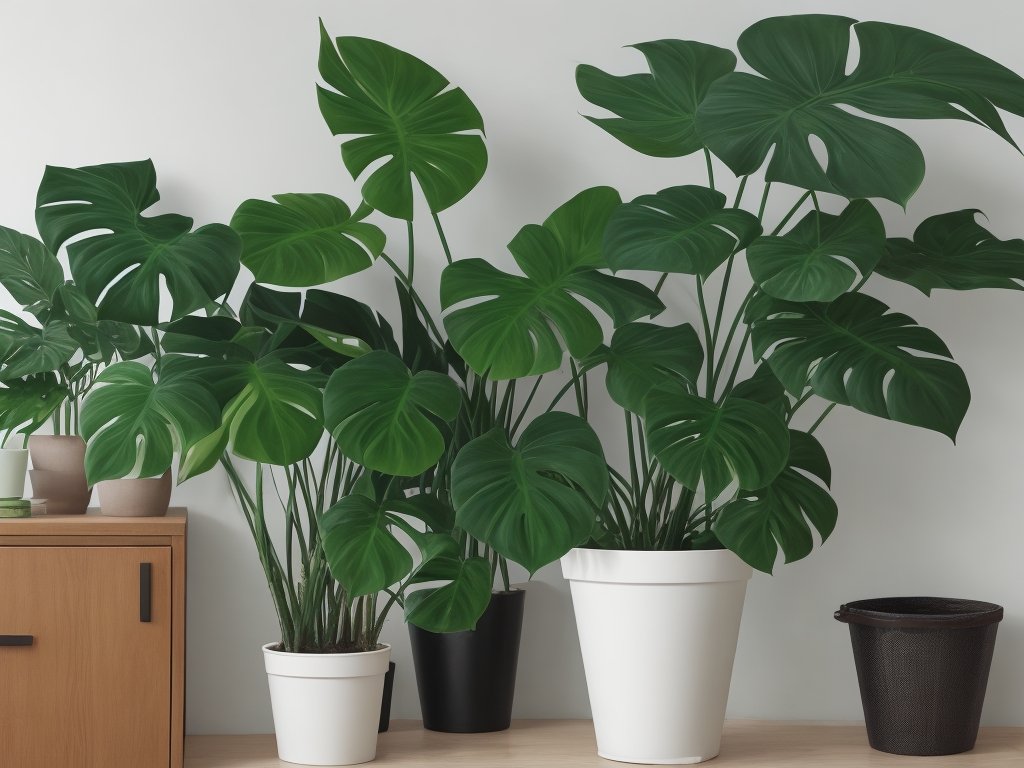How To Grow Monstera Obliqua (Rare & Unusual Species)?
Key Takeaways:
- Provide a well-draining soil mix for Monstera obliqua to thrive.
- Maintain high humidity levels to support healthy growth.
- Use a moss pole or trellis for Monstera obliqua to climb and flourish.
- Protect Monstera obliqua from direct sunlight to prevent leaf damage.
Are you ready to take your plant collection to the next level?
If you’re looking for a rare and unusual species to add some uniqueness to your indoor jungle, then look no further than Monstera obliqua.
This captivating plant, with its delicate and fenestrated leaves, is a true statement piece.
But how do you grow this elusive species successfully?
In this blog, I’ll guide you through the ins and outs of caring for Monstera obliqua, from understanding its growing requirements to mastering propagation methods.
Get ready to unlock the secrets to cultivating this rare beauty and become the envy of every plant lover out there.
| Aspect | Requirements |
| Light | Bright, indirect light |
| Temperature | 60-80°F (15-27°C) |
| Humidity | High humidity (60-70%) |
| Watering | Keep soil moist, but not soggy |
| Soil | Well-draining potting mix |
| Fertilizer | Monthly, during growing season |
| Pruning | Remove damaged or yellow leaves |
| Propagation | Stem cuttings in water or soil |
Understanding the Growing Requirements of Monstera obliqua
To successfully grow Monstera obliqua, you need to understand its specific requirements.
Here’s what you need to know.
Light requirements for Monstera obliqua
Monstera obliqua thrives in bright, indirect light.
It prefers a well-lit space, away from direct sunlight that can scorch its leaves.
Place it near a window with filtered light or in a spot with bright, indirect light.
Providing the right amount of light will help your Monstera obliqua grow healthy and vibrant.

Temperature and humidity needs of Monstera obliqua
Monstera obliqua thrives in temperatures between 65-85°F (18-29°C).
They prefer a warm and humid environment similar to their natural habitat in the tropical rainforests of Central and South America.
It’s important to maintain a humidity level of 60-80% for optimal growth.
You can achieve this by misting the leaves regularly, placing the plant on a pebble tray with water, or using a humidifier.
Just avoid placing it near drafts or in excessively dry areas.
Soil and potting requirements for Monstera obliqua
Monstera obliqua prefers well-draining soil that retains some moisture.
A good potting mix consists of equal parts peat moss, perlite, and orchid bark.
It’s important to choose a pot with drainage holes to prevent waterlogging.
Providing a moss pole or trellis for support is also beneficial for the plant’s growth.
Remember to repot every 1-2 years to prevent the plant from becoming rootbound.
Propagation Methods for Monstera obliqua
There are several effective methods for propagating Monstera obliqua, including stem cuttings, air layering, and potentially from seeds.
Propagating Monstera obliqua from stem cuttings
To propagate Monstera obliqua from stem cuttings, start by selecting a healthy stem with at least one leaf node.
Remove a few leaves near the bottom and dip the cut end in a rooting hormone (if desired).
Place the cutting in a vase or jar with water, making sure the nodes are submerged.
Keep the cutting in a warm and bright location, away from direct sunlight.
Change the water regularly and wait for roots to develop.
Once the roots are about 1-2 inches long, you can transfer the cutting to a pot with well-draining soil.
Keep the newly potted cutting in a warm and humid environment until it establishes.
Propagating Monstera obliqua through air layering
To propagate Monstera obliqua through air layering, follow these steps:
- Select a healthy and mature stem with at least two nodes (the points from which leaves emerge.
- Make a small cut or scrape at the bottom of the stem, just below a node.
- Apply rooting hormone to the wounded area to stimulate root growth.
- Wrap the wounded area with moist sphagnum moss, ensuring it’s firmly in place.
- Cover the moss with plastic wrap to create a moist and humid environment.
- Secure the plastic wrap with twist ties or garden tape.
- Monitor the moss for root growth, keeping it moist but not soggy.
- Once roots have developed, carefully cut below the rooted area and remove the plastic wrap.
- Plant the rooted section in a pot filled with well-draining soil.
- Provide the newly propagated plant with the same care and conditions as a mature Monstera obliqua.
Air layering is a reliable method to propagate Monstera obliqua and can result in successful and healthy new plants.
Give it a try and enjoy expanding your Monstera collection!

Propagating Monstera obliqua from seed (if applicable)
To propagate Monstera obliqua from seed, you will need fresh seeds. Here’s a quick guide to get you started:
- Harvest the seeds: Gently remove the outer layer of the fruit and collect the seeds. Ensure they are fresh and ripe.
- Prepare the planting medium: Use a well-draining potting mix to create the ideal environment for seed germination.
- Sow the seeds: Place the seeds on the soil surface and lightly cover them with a thin layer of soil. Mist the soil to keep it evenly moist.
- Provide warmth and humidity: Keep the seeds in a warm and humid environment, ideally around 70-80°F (21-27°C.
- Be patient: Germination can take several weeks or even months, so be patient and consistent with moisture levels.
- Transplanting: Once the seedlings have developed a few true leaves, they can be gently transplanted into individual pots.
Remember, propagating Monstera obliqua from seed can be a bit more challenging compared to other methods. It’s important to have realistic expectations and be prepared for a longer germination process.
Caring for Monstera obliqua
To care for Monstera obliqua, make sure to provide proper watering, fertilize regularly, prune and shape as needed, and watch out for potential pests and diseases.
Watering guidelines for Monstera obliqua
Water Monstera obliqua when the top inch of the soil feels dry. The frequency will depend on factors like temperature and humidity.
Water thoroughly until it drains from the bottom of the pot.
Avoid overwatering to prevent root rot. Ensure proper drainage and adjust watering schedule as needed.

Fertilizing routine for healthy growth
To ensure healthy growth of your Monstera obliqua, it’s important to establish a regular fertilizing routine.
Here’s a simple guide:
- Use a balanced, water-soluble fertilizer specifically formulated for houseplants.
- During the growing season (spring and summer, fertilize every two to four weeks.
- Dilute the fertilizer according to the package instructions and apply it to the soil around the base of the plant.
- Be careful not to over-fertilize, as this can lead to nutrient burn and other issues.
- During the dormant season (fall and winter, reduce the frequency of fertilizing to once a month or every six weeks.
- Always water your Monstera obliqua thoroughly before fertilizing to prevent root burn.
- Regularly monitor your plant’s growth and adjust the fertilizing routine accordingly.
Remember, each plant is unique, so observe your Monstera obliqua closely and adjust the fertilizing routine based on its specific needs.

Pruning and shaping Monstera obliqua
To prune and shape your Monstera obliqua, start by removing any dead or damaged leaves.
You can also trim back overgrown branches to help maintain a neat and compact appearance.
For shaping, consider using stakes or trellises to guide the vines in the direction you desire.
Regular pruning promotes healthy growth and helps to prevent legginess.
Potential pests and diseases to watch out for
Some potential pests and diseases to watch out for with Monstera obliqua include spider mites, mealybugs, scale insects, and root rot. Regularly inspect your plant for any signs of infestation or disease, such as webs, sticky residue, or wilting leaves.
Treat any issues promptly to keep your Monstera obliqua healthy and thriving.
Providing the Best Support for Monstera obliqua
To provide the best support for your Monstera obliqua, choose the right type of support structure and train and guide the vines as they grow. Additionally, secure the plant for optimal growth to ensure it thrives.
Choosing the right type of support structure
To choose the right support structure for your Monstera obliqua, consider its climbing nature.
A moss pole, trellis, or wall mount can provide stability and allow the vines to grow and climb.
Make sure the support structure is sturdy and well-anchored to accommodate the plant’s growth.
Training and guiding Monstera obliqua vines
To train and guide your Monstera obliqua vines, use a support structure like a trellis or moss pole. Gently attach the vines to the structure using plant ties or soft twine.
Regularly adjust and secure the vines as they grow to encourage upward growth.
Prune any unruly growth to promote a more compact and tidy appearance.
Securing Monstera obliqua for optimal growth
To secure Monstera obliqua for optimal growth, it is important to choose the right type of support structure, such as a moss pole or trellis.
This will provide stability and allow the plant to climb and spread its vibrant foliage.
Additionally, regularly pruning and shaping the plant will promote healthy growth and prevent overcrowding.
Finally, ensuring that the support structure is securely anchored will prevent any accidents and keep your Monstera obliqua thriving.
Special Considerations for Rare and Unusual Species
When it comes to growing rare and unusual species like Monstera obliqua, there are a few special considerations to keep in mind.
Sourcing Monstera obliqua: trusted nurseries and online platforms
To source Monstera obliqua, you can try trusted nurseries specializing in rare and unusual plants.
Some reputable nurseries may have limited availability, so it’s important to check their stock regularly.
Online plant marketplaces and platforms like Etsy, eBay, and specialized plant-focused websites can also be good sources.
Make sure to read reviews and check seller ratings before making a purchase.
Joining plant enthusiast groups and forums can also help you connect with fellow plant lovers who may have Monstera obliqua available for trade or sale.
Potential challenges in growing Monstera obliqua
Growing Monstera obliqua can present a few potential challenges.
Here are some to be aware of:
- Low availability: Monstera obliqua is a rare and unusual species, so finding a healthy plant may be difficult.
- Fragile nature: Monstera obliqua has delicate leaves and stems, making it susceptible to damage during transport or handling.
- Specific care requirements: This species prefers high humidity, bright indirect light, and well-draining soil. Failure to meet these needs can result in stunted growth or leaf issues.
- Pests and diseases: Like other houseplants, Monstera obliqua can attract pests like spider mites or suffer from fungal diseases if not properly cared for.
To overcome these challenges, it’s essential to source from trusted nurseries, provide the right conditions, and continuously monitor for pests and diseases.
Connecting with other Monstera enthusiasts and resources
Connecting with other Monstera enthusiasts and accessing valuable resources can enhance your journey as a plant parent.
Join online communities like Monstera Facebook groups, Instagram hashtags, and plant forums to connect and share experiences.
Follow reputable blogs and websites dedicated to Monstera care, and consider attending plant swaps or local gardening events to meet fellow enthusiasts in person.
Don’t hesitate to reach out and ask questions – the Monstera community is typically welcoming and eager to help!
Frequently Asked Questions
What are the key differences between Monstera obliqua and Monstera adansonii?
Monstera obliqua and Monstera adansonii are often mistaken for each other, but they do have some key differences.
The most noticeable difference is their leaf size and shape.
Monstera obliqua has smaller, more elongated leaves with larger holes, while Monstera adansonii has larger, heart-shaped leaves with smaller holes.
Another difference is their growth habits – Monstera obliqua tends to have a more compact, bushy growth pattern, while Monstera adansonii has longer, trailing vines.
Keep these differences in mind when identifying and caring for your Monstera plants.
Is Monstera obliqua suitable for beginners?
Is Monstera obliqua suitable for beginners? Absolutely! Monstera obliqua is generally easy to care for and can thrive in various indoor environments.
With the right light, temperature, and watering routine, even beginners can enjoy growing this beautiful and unique plant.
Just make sure to provide it with proper support, and you’re good to go!
How long does it take for Monstera obliqua to reach maturity?
Monstera obliqua typically takes around 3 to 5 years to reach maturity. However, this can vary depending on various factors such as the growing conditions, care provided, and the size of the plant when it was first acquired.
It’s important to be patient and provide the appropriate care for optimal growth.
Can Monstera obliqua be grown outdoors?
No, Monstera obliqua is not suitable for outdoor growing.
It is a tropical plant that thrives in warm and humid conditions.
Exposing it to outdoor elements such as direct sunlight, cold temperatures, and extreme weather can damage or even kill the plant.
It is best to keep Monstera obliqua as an indoor plant where you can control its environment and provide the necessary conditions for its growth.
How often should I repot my Monstera obliqua?
You should aim to repot your Monstera obliqua every 1-2 years. This will give the plant enough space for its roots to grow and prevent it from becoming root bound.
Signs that it may be time to repot include roots coming out of the drainage holes or the plant being top-heavy.
Remember to use a well-draining potting mix and a slightly larger pot when repotting.
Final Verdict
Growing Monstera obliqua requires careful attention to its unique requirements. Providing the right balance of light, temperature, humidity, and soil is crucial for its thriving.
Propagation can be done through stem cuttings or air layering, while proper care involves watering and fertilizing routines, pruning, and monitoring for pests and diseases.
Choosing the right support structure and training the vines are essential for optimal growth. When dealing with rare and unusual species like Monstera obliqua, it is important to source from trusted nurseries, connect with other enthusiasts, and be prepared for potential challenges.
Remember, patience and dedication will ultimately reward you with a stunning and flourishing Monstera obliqua.






